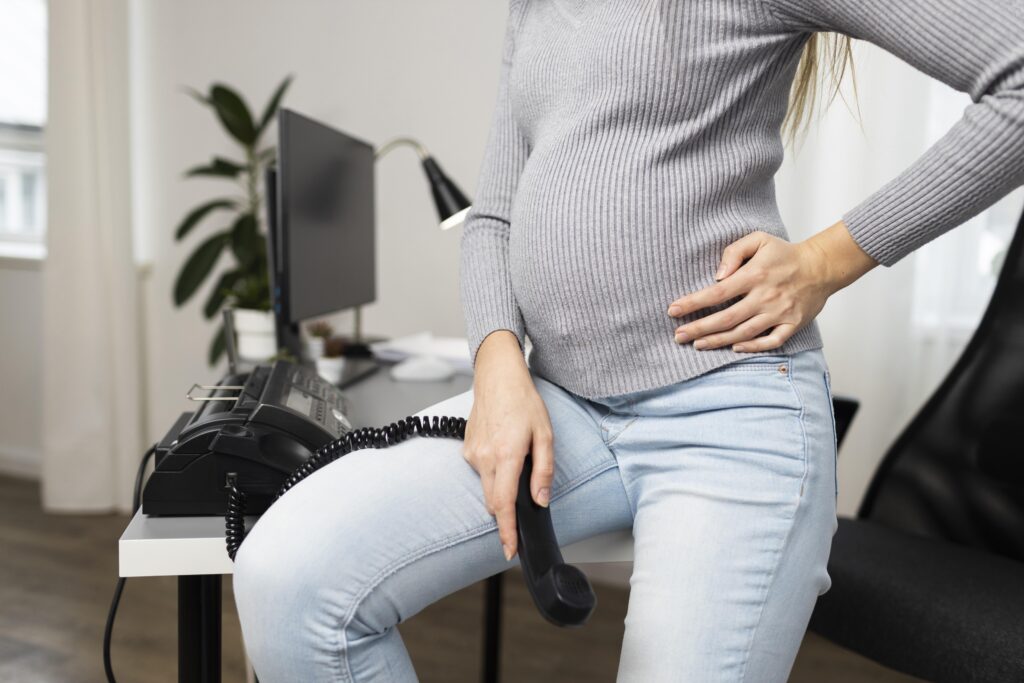If you're struggling with lower back pain, you're not alone, and finding gentle relief might be more attainable than you think. Simple techniques like stretching, strengthening, and mindfulness can make a significant difference in your daily comfort. You might be surprised by how small adjustments to your routine can lead to long-lasting relief. But what specific exercises and practices can you incorporate into your day-to-day life to effectively combat this discomfort? The answers may just transform your approach to managing pain.
Understanding Lower Back Pain
Lower back pain can feel overwhelming, especially when it interferes with your daily activities. It's vital to understand that lower back pain isn't just a single condition; it can stem from various causes, each requiring different approaches for relief. You might find it helpful to reflect on factors like age, lifestyle, and any previous injuries, as these can greatly influence your experience with pain.
Muscle strains are among the most common causes of lower back pain. If you've recently lifted something heavy or made a sudden movement, you may have strained a muscle or ligament. This type of pain often manifests suddenly and can range from mild to debilitating.
On the other hand, conditions like herniated discs or spinal stenosis can develop gradually, often presenting as a chronic ache that persists over time. If you've been sitting for long periods or have poor posture, these issues can worsen, leading to more discomfort.
It's important to pay attention to your body's signals. If you feel persistent pain, it's advisable to consult a healthcare professional who can help diagnose the root cause. They may recommend imaging tests to pinpoint the issue accurately.
Understanding the specific nature of your lower back pain can empower you to take informed steps toward recovery. Remember, every individual's experience is unique, so what works for one person may not work for another. Stay proactive, and seek the right guidance to manage your pain effectively.
Gentle Stretching Techniques
Finding relief from lower back pain often involves incorporating gentle stretching techniques into your routine. These stretches can help improve flexibility, reduce tension, and promote relaxation in your lower back.
You don't need to push yourself too hard; the goal is to ease discomfort and enhance mobility. Here are a few gentle stretches you can try:
- Cat-Cow Stretch: Start on your hands and knees. Alternate between arching your back (cat) and lowering your belly while lifting your head (cow). This movement helps mobilize your spine.
- Child's Pose: Kneel on the floor, sit back on your heels, and stretch your arms forward while lowering your torso. This pose gently lengthens the spine and releases tension in the back.
- Seated Forward Bend: Sit with your legs extended in front of you. Slowly reach toward your toes while keeping your back straight. This stretch targets your hamstrings and lower back.
- Knee-to-Chest Stretch: Lie on your back and gently pull one knee to your chest, holding for a few seconds before switching to the other leg. This helps relieve tightness in the lower back.
- Gentle Torso Twist: Sit cross-legged and slowly twist your torso to one side, using your hand to deepen the stretch. This movement enhances spinal flexibility.
Incorporating these gentle stretches into your daily routine can make a significant difference in managing lower back pain and improving your overall well-being.
Strengthening Exercises
Strengthening your core and back muscles is vital for alleviating lower back pain and preventing future issues. A strong core supports your spine and helps maintain proper posture, reducing strain on your lower back. Here are some effective exercises you can incorporate into your routine.
Begin with planks. Position yourself face down, resting on your forearms and toes. Keep your body in a straight line from head to heels. Hold this position for 20 to 30 seconds, gradually increasing the duration as you gain strength. Planks engage your entire core, providing extensive support for your back.
Next, try bridges. Lie on your back with your knees bent and feet flat on the floor. Slowly lift your hips toward the ceiling, creating a straight line from your shoulders to your knees. Hold for a few seconds before lowering back down. Aim for 10 to 15 repetitions. Bridges strengthen your glutes and lower back, which are essential for stability.
Don't forget about bird-dogs. Start on your hands and knees, then extend one arm forward while simultaneously extending the opposite leg back. Hold for a moment, then return to the starting position and switch sides. Perform 10 repetitions on each side. This exercise improves balance and strengthens your core and lower back.
Incorporating these strengthening exercises into your routine can greatly enhance your back health. Aim for at least two to three sessions each week for ideal results, and always listen to your body to avoid overexertion.
Mindfulness and Relaxation
While exercises like planks and bridges play a significant role in alleviating lower back pain, incorporating mindfulness and relaxation techniques can further enhance your overall well-being.
These practices help you tune into your body, release tension, and cultivate a sense of calm. When you're mindful, you become more aware of how stress affects your body, particularly your lower back.
Here are some mindfulness and relaxation techniques you can easily integrate into your routine:
- Deep Breathing: Focus on your breath, inhaling deeply through your nose and exhaling slowly through your mouth. This can lower stress and ease muscle tension.
- Guided Meditation: Use apps or online videos to find guided meditations that specifically address pain relief and relaxation.
- Progressive Muscle Relaxation: Tense and relax each muscle group in your body, starting from your toes up to your head. This practice helps release built-up tension.
- Mindful Movement: Engage in gentle activities like yoga or tai chi. These practices promote relaxation while gently stretching your muscles.
- Visualization: Picture a peaceful scene or a place where you feel safe and relaxed. This can help distract your mind from pain and promote a sense of well-being.
Lifestyle Adjustments for Relief
Making simple lifestyle adjustments can greatly impact your lower back pain relief. Start by evaluating your posture throughout the day. Whether you're sitting at your desk or standing in line, maintaining good posture can prevent unnecessary strain on your back.
Try to keep your shoulders back and your spine aligned, and consider using ergonomic chairs or cushions to support your lower back.
Next, incorporate regular physical activity into your routine. Engaging in low-impact exercises like walking, swimming, or yoga can strengthen the muscles that support your spine, improve flexibility, and reduce pain.
Aim for at least 30 minutes of activity most days, but listen to your body and don't push through pain.
Additionally, pay attention to your sleep habits. A supportive mattress and the right pillow can make a significant difference. If your mattress is old or too soft, it might be time for a replacement.
Sleeping on your side with a pillow between your knees can also help relieve pressure on your lower back.
Diet plays a role too. Eating a balanced diet rich in anti-inflammatory foods, like fruits, vegetables, and omega-3 fatty acids, can help reduce pain.
Staying hydrated is essential, as dehydration can lead to muscle cramps and increased discomfort.
Finally, consider managing stress through activities you enjoy, whether it's reading, gardening, or spending time with friends.
Stress can exacerbate pain, so finding ways to relax is vital for your overall well-being.
Conclusion
Incorporating gentle stretching, strengthening exercises, and mindfulness techniques can make a real difference in managing lower back pain. By committing to these practices and making small lifestyle adjustments, you can foster long-term relief and enhance your overall well-being. Remember, consistency is key, and listening to your body will guide you in finding what works best for you. With patience and dedication, you're on your way to a healthier, more comfortable back.



